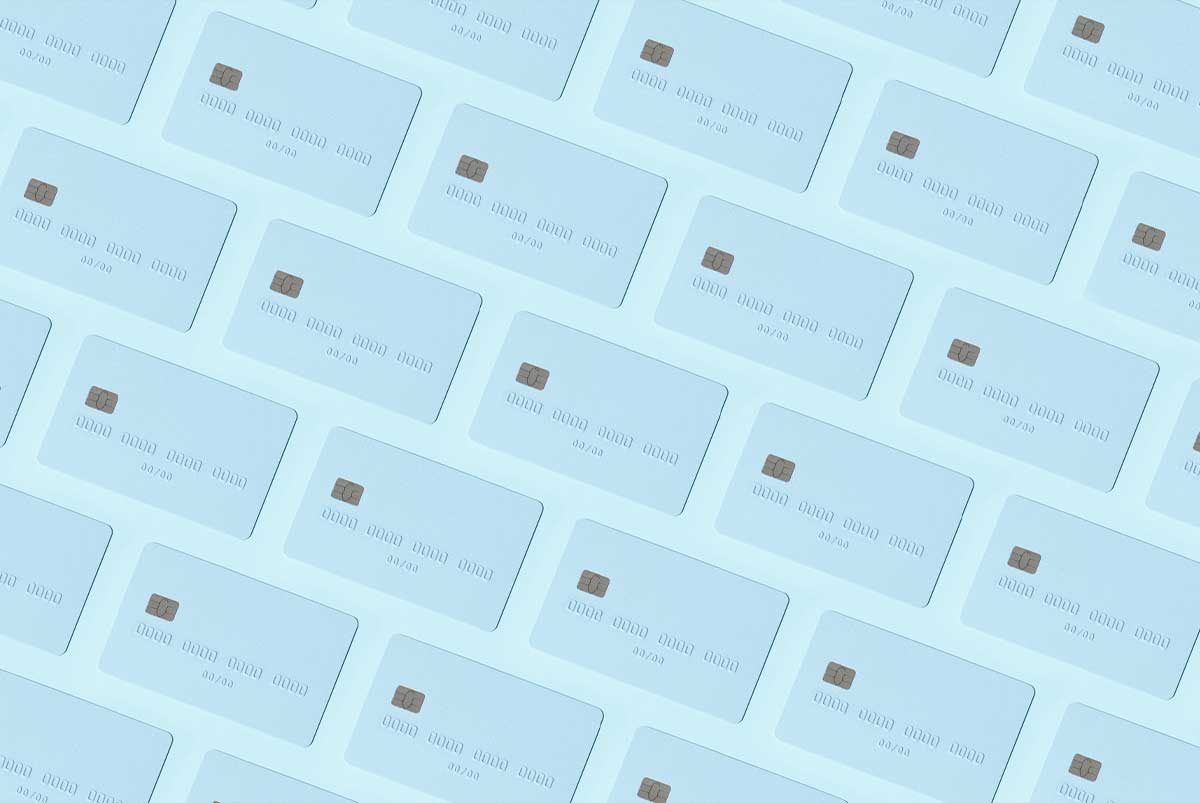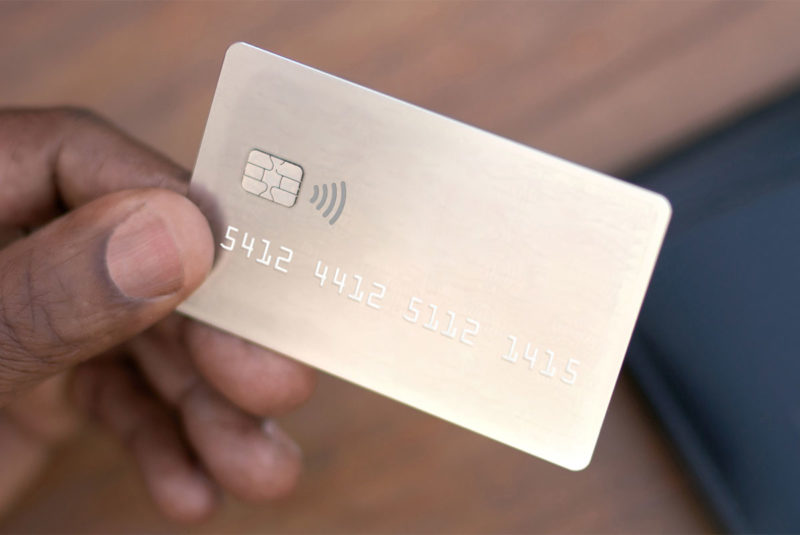Are you new to credit cards? Do you want to understand how credit cards impact your credit history and how to maximize your credit scores?
Remember, a credit card can be a 100% free way to build up your credit, as long as you use it responsibly.
This is a guide to building and improving your credit with credit cards. You’ll learn:
- Why good credit history is important and how you can monitor your credit reports and scores
- How to pick your first card
- How your credit reports and scores are affected by having a credit card
- The basics of how to use credit cards to build your credit history
- Easy tips for keeping your credit reports and scores in great shape
Our goal is to help you develop good long-term habits and an understanding of how to establish a great credit history. This is not a guide about using risky techniques to try to manipulate credit scoring systems. Building great credit takes time and this guide can help you take a big step in the right direction.
Getting Started: How’s Your Credit History?
Your credit history is a record of your past behavior as a borrower. Lenders use this past behavior to determine how likely you are to pay money back.
Credit history is recorded on credit reports. There are three major credit bureaus (also known as credit reporting agencies) in the United States:
- Equifax®
- Experian™
- TransUnion®
Lenders see people with a long history of on-time payments as reliable borrowers, likely to pay loans back on time and in full. People with bad credit history, including late payments and maxed-out cards, are seen as risky borrowers who may not pay back loans. Based on your credit history, a lender may decide whether they want to do business with you, and on what terms.
Check all your reports often to correct inaccurate information. You can get one free credit report every 12 months from each credit bureau at AnnualCreditReport.com.
Credit scores
A credit score is a number that indicates your risk as a borrower and the likelihood that you’ll pay your bills on time. Specifically, a FICO® or VantageScore® credit score predicts the likelihood that you will pay any credit obligation 90 days late within the next 24 months. Credit scores are determined by mathematical models (called scoring models) and are based on information in credit reports.
Many popular credit scoring models use a range of 300 – 850. A “good credit score” is typically anything above 670, but this is subjective depending on the lender. Although scores from VantageScore® are different from FICO® scores, many of the same factors are considered and weighed similarly. Several free services will let you monitor some of your FICO® scores and VantageScores® on a regular basis.
Credit scoring models are proprietary, so you may not always know exactly why one of your credit scores has gone up or down by a few points.
Instead, focus on the fundamentals of building good credit history:
- Paying all your bills on time
- Keeping your utilization low
- Leaving accounts open for a long time (closing an account is not necessarily a good thing)
- Having a good mix of credit accounts
- Not letting others pull your credit reports too frequently
As long as you focus on the fundamentals to build good credit history on your credit reports, all your credit scores – regardless of which brand or version – should eventually reflect your good behavior. Remember that lending decisions are not made entirely based on one of your credit scores. They are also based on other information you submit on a credit application, like your annual income and your debt-to-income (DTI) ratio.
How Building Credit With a Credit Card Works
You can certainly build credit without a credit card, but having one or more credit cards can be advantageous when you’re working to improve your credit status. Plus, they can be a convenient and easy way to add more accounts to your credit history even if you already have other types of accounts, like installment loans.
Here are some benefits of credit cards to consider:
- Free to have: Many credit cards don’t have annual fees, which means they can be free to have.
- Can be free to use: You can avoid paying interest on your purchases as long as you don’t revolve a balance from one month to the next (carrying a balance is not required to build credit).
- Buying power: Credit cards provide great buying capacity – how else could you safely carry around $10,000 of purchasing power?
- Purchase benefits: Credit cards often provide purchase protection, covering items you buy against damage and theft for a few months. They can also provide extended warranties and insurance for travel and auto rentals.
- Security: If you lose your credit card you can simply cancel it and request a free replacement, which you can’t do with cash.
- Limited liability: You are not held liable for fraudulent credit card use, so you don’t need to worry about theft as long as you immediately report your card as lost or stolen.
- Rewards: Many credit cards offer points or cash back, which can add up to significant savings or give you other perks like free flights.
- Discounts: Some card issuers offer additional online rewards portals where you can find significant discounts at popular retailers.
Credit cards can affect your credit in several different ways, beginning as soon as you apply for one (even if you’re denied).
To show you how building credit with a credit card works, let’s start at step one with a credit card application and move on to how using a credit card will affect your credit. For each aspect, we’ll point out whether it’s likely to have a positive, negative, or neutral effect on your FICO® credit scores.
Choosing your first credit card
If you don’t already have a credit card, you may not have any credit history established yet. The process of choosing a card doesn’t have any direct impact on your credit until you decide to actually apply for one.
Let’s take a look at some of your options for your first credit card:
Check for prequalified offers
You may have received an offer in the mail that says you’re “preapproved” or “prequalified” for a certain card. Approval for a prescreened card offer isn’t guaranteed, but with it you’re more likely to get approved because the issuer has already checked your credit history.
Many major credit card issuers allow you to check for cards that will be a good fit for you on their websites. Sometimes you’ll get bigger signup bonuses or better terms than someone who applies without being prescreened.
Student credit cards
If you’re a college student, special credit cards designed for students are available to help you start establishing credit history. Issuers don’t expect applicants for these cards to have significant credit history already.
Store credit cards
You’ve probably been asked if you want to apply for a store credit card when you’re making a purchase. But store credit cards aren’t necessarily as good as regular credit cards from big banks and may not always be reported to the credit bureaus (which is key for building credit history).
Store credit cards tend to have less favorable terms (like lower credit limits) than general credit cards, and many store credit cards can only be used at certain stores instead of anywhere major credit cards are accepted.
One upside of store credit cards is that they tend to have lower approval requirements than cards from big banks. So you might be able to get a store credit card if you have little or no credit history established.
Store credit cards can be a good idea if you fully understand the terms of the card, are aware that your credit card activity may be reported to the credit bureaus and if you shop at a certain brand of stores enough to take advantage of the rewards and benefits the card provides.
Secured credit cards
If you have bad credit or no credit, banks may think you’re too risky for them to issue you a traditional credit card. But you may be able to get a secured card.
When you open a secured credit card, you’ll deposit money to establish your credit limit. For example, if you apply for a secured card and deposit $200, you would end up with a credit limit of around $200.
Usually, you’ll need to provide bank account information on the application so the issuer can withdraw the security deposit if you’re approved. Sometimes, this deposit goes into a savings account that earns interest. The bank keeps this deposit if you don’t pay your bill on time.
A secured card is meant to be a starting point for building or rebuilding credit so you can eventually qualify for a “regular,” unsecured credit card. Once you’ve built your credit, you can get your deposit back by closing the card. Some issuers will even let you convert the account to an unsecured card product instead.
Regional banks or credit unions
You may be able to get a credit card with a local bank or credit union if you already have a banking relationship with them. It’s possible even if you have no or limited credit history.
If you decide to get a credit card from a small regional bank or credit union, ask them whether they report to all three credit bureaus first. That way you’ll know your responsible credit use will be rewarded by establishing credit history on all three of your credit reports.
Apply for a specific card
You could apply for a card (for example, a rewards or travel card) that seems like a good fit for you and if you already have some credit history established.
However, this approach can be overwhelming since there are so many credit cards out there. If you don’t already have well established credit, or don’t have a specific card in mind that you want to get, this option is probably not for you.
Credit builder loans
A credit builder loan is not a credit card. Instead, it’s a special type of loan that’s one of the safest and easiest ways to build credit. If you’re new to credit, a credit builder loan can be a great way to jumpstart the credit building process.
If your application for the loan is approved, the amount of the loan goes into a special account that you can’t access. Then, you make payments to your lender or credit union every month to pay off the loan. Once you’ve paid off the entire loan amount, you get access to the funds plus any interest earned while the money was held in savings.
This loan payment activity is typically reported to credit bureaus, but you should always check with the lender or credit union to verify. Credit builder loans are available from many banks, credit unions, and a few online lenders.
Even if you already have credit established, a credit builder loan can diversify the types of accounts on your credit reports, which can help your credit scores.
Applying for your credit card
Usually, applying for a credit card involves filling out a form online. Often, you’ll find out if you’re approved within seconds of submitting the application. Other times, you may need to wait for the credit card issuer to manually review your application and make a decision. If you don’t receive an answer immediately, the issuer will generally mail you an answer within about 7 – 10 days.
Sometimes an issuer will ask for additional information after you’ve applied and may ask for documentation to verify your income.
When you apply for a credit card, the issuer will check one or more of your credit reports to decide whether to approve you.
Any time you apply for new credit and the lender checks your credit reports, it is called a “hard inquiry.” A record of this hard inquiry will be included on your credit report for two years, and it will be factored into credit scores for one year.
A hard inquiry may have a temporary, slightly negative effect on your credit scores, even though it’s a normal part of the credit application process. This is because it shows that you’re actively seeking credit and, believe it or not, that can indicate a higher level of credit risk.
A few hard inquiries over the course of the past two years usually isn’t a big deal. But many hard inquiries in a short period of time might indicate that you’re seeking credit because you’re in a tight financial situation.
Getting approved for a credit card
If your application for a credit card is approved, the lender will automatically open that account for you to use. That’s why it’s important to really consider whether you want a card before you apply.
Some people get to this stage and feel buyer’s remorse. You may think that if you don’t activate the card, the account will not be opened and it won’t impact your credit. Unfortunately this isn’t true.
Once you’re approved for a credit card, it can affect your credit in several different ways – some positive and some negative. But remember, if you’re denied, nothing else will happen. There is no negative consequence to being denied for credit, other than the hard inquiry on your report.
So, let’s look at the ways your credit scores may be impacted by a new credit card account.
New credit (10% of a FICO® score)
Opening many new accounts in a short period of time can be seen as risky financial behavior because it looks like you need money. This “new credit” factor considered in your credit scores is where the number of inquiries and length of time since your most recent inquiry come into play. The length of time since you last opened an account can also be factored in here.
While every new inquiry and every new account won’t automatically have a negative impact on your scores, there’s always a possibility that it could.
Luckily, this category only accounts for 10% of your total FICO® score, and you can reduce the impact by not opening a lot of new accounts too quickly. You can also wait until your account is no longer considered “new” and any previous hard inquiries have aged over 1 year.
Length of credit history (15% of a FICO® score)
The older your credit history, the better. If you established accounts a long time ago and have been able to manage them responsibly, that shows lenders you’re less risky than someone who doesn’t have a very long credit history.
If you add the length of time each of your accounts has been open and divide the total by the number of accounts, you get the average length of your credit history. If the average age of your accounts is less than about 6 or 7 years, your credit history may be considered “short” and you probably won’t get the maximum points available from this category.
This isn’t usually a very big deal because this category only accounts for 15% of FICO® scores. So you can still have good credit even if your credit history is short.
The ages of your newest and oldest accounts are also considered in this scoring category.
There are two potential ways to improve your credit scores within this category. First, you can wait for the accounts on your reports to age. Second, you can ask a loved one to add you to an existing, older credit card account as an authorized user (more on this later). If you’re added onto an older account with positive payment history, it might increase your average age of accounts.
Credit mix (10% of a FICO® score)
Your credit mix is a conglomerate of all the different types of credit accounts you have open. The more diverse the types of accounts that appear on your credit report, the better. Being able to manage multiple types of accounts well, over time, generally shows lenders that you’re a less risky borrower.
Credit cards are known as “revolving debt,” while personal loans, auto loans, and others are known as “installment debt.” If you only had installment accounts on your reports previously, with no revolving accounts, opening a new credit card account might help your credit scores.
Keep in mind that your credit mix only makes up 10% of your FICO® scores. So if your credit reports are already very diverse and you have a credit card, adding another credit card account should have no effect.
Amounts owed (30% of a FICO® score)
Thirty percent of your FICO® score is based on the “amounts owed” category of your credit reports. It considers information in your reports like:
- How many accounts have balances
- The balance on each account compared to the credit limit of that account
- The total balances across all accounts compared to the total credit limit across all accounts
When you open a new credit card account, you’ll be assigned a credit limit. The credit limit is the maximum amount you can spend or keep as a balance owed on the card.
The percentage of the credit limit you use on each credit card and across all credit cards is a major factor in credit scoring models. This is known as your credit utilization rate. Using a high percentage of your credit limit is seen as very risky. It may indicate that you’re overextended financially and may have trouble paying your bills as a result.
To figure out your overall credit utilization, simply add up the credit limits on all of your credit cards. Then add up the balances on all of those cards. The percentage of the total balance compared to the total credit limit is your credit utilization rate.
Even if you don’t use the card you just opened, the credit limit will show up on your credit reports and will be factored into your credit scores. This additional available credit could lower your overall credit utilization. If it does, the new account could have a significant positive impact on your credit scores, depending on the balances and credit limits of the other credit cards on your reports.
Credit scoring systems also look at the number of accounts with any kind of balance, including all types of accounts, not just credit cards. A large number could indicate higher risk, but the lower your balances relative to your limits, the better your scores will be.
However, installment loans aren’t nearly as influential over your credit scores as your revolving utilization accounts and ratios, aka your credit cards.
Your payment history (35% of a FICO® score)
Credit scores are designed to help lenders determine how likely you are to pay your bills on time. Because of this, the biggest factor in your credit scores is a record of paying your bills on time.
Many types of accounts are considered in this scoring category, from credit cards to mortgages to student loans. Your payment history for every account on your reports will be considered. Factors like how late the payment was, how often you were late and how recently any late payments occurred may all come into play.
If accounts become very late they can be sold to collection agencies, which could be added to your credit reports as well. Collection accounts can have a strong negative effect on your credit scores. The newer they are, the worse the impact may be.
So when it comes to payment history, it doesn’t really make a difference if you use the credit card once per year, or multiple times per month – as long as you always pay on time. But keep in mind that your card could be closed for inactivity if you don’t use it enough.
Tips for Using a Credit Card To Build Credit
Let’s summarize some of the things we’ve gone over in this guide and give you a few key tips to help you along on your credit building journey.
Tip 1: Choose the right card for you
Credit cards are excellent credit-building tools no matter your current credit situation. Find a card that suits your needs – then use it responsibly.
The right first card for you should fit into your purchasing habits and lifestyle. You shouldn’t need to go out of your way to use it. If you already use a debit card to buy things, you could start by making those purchases on a credit card instead.
In general, the better your credit is, the more (and better) options you will have when choosing a card. This means as you build your credit you could be able to qualify for cards that earn more rewards and provide more benefits (like airport lounge access).
Tip 2: Don’t apply for too many credit cards in a short period of time
Many hard inquiries from applying for a lot of credit cards in a short time span can have a negative effect on your credit scores. And if you’re approved for those new accounts, it will lower the average age of your accounts, which may also have a negative effect on credit scores.
Tip 3: Maintain a low utilization rate
A large portion of your FICO® score is based on how much of your available credit limit you’re using. Try to maintain low or $0 balances across all your cards – avoid maxing them out. To reduce your reported credit utilization, you can also pay off your credit card before the statement period closes if you’re using a high percentage of your credit limit. Then there won’t be a balance to report to the credit bureaus.
Although 1% overall utilization may technically be better than 0%, getting your utilization as low as possible will be good for your credit scores.
Tip 4: Pay off the balance in full every month
Missing payments can negatively affect your credit scores, and payment history accounts for the largest portion of your FICO® score. So the most important thing you can do to build and maintain good credit history is to pay all your bills on time. Take it a step further and pay off your balance in full every month. This will lower your credit utilization and your overall account balance, and boost your scores.
Set up automatic payments to pay the full statement balance each month, not just the minimum. This can help you both stay out of credit card debt and avoid interest completely with most cards.
Tip 5: Ask for higher credit limits
When you get a higher credit limit, but don’t increase your use of credit, your utilization rate lowers. So another way to positively impact your credit scores is to increase your credit limit on existing accounts.
You can do this by requesting an increase from your card issuer. If you have a good track record of paying your credit card statements on time, for at least several months a card issuer may be willing to give your credit limit a boost. Keep in mind that some card issuers automatically increase your credit limit over time. And if you just had a limit increase, they might not be willing to give you another one.
Tip 6: Become an authorized user
This can be a shortcut to establishing some credit history.
If you know someone with good credit who trusts you (and you trust), you could ask that person to add you as an authorized user on their credit card account. Most credit card issuers will report authorized users’ activity on credit reports.
One benefit of becoming an authorized user is that it doesn’t require a credit check. Even if you have no credit or bad credit, you’ll likely be added to your trusted ally’s account and use it to start building your credit.
The downside of this approach is that any delinquencies from the primary cardholder, like late payments, will also show up on the authorized user’s credit reports (that’s you).
Slow and Steady Wins the Race
This may seem like a lot of information, but it all boils down to some fairly simple principles. When you consider all the various scoring factors we’ve talked about and use the tips we’ve outlined, you’ll be well on your way to building credit with a credit card.
Just remember that building credit takes time, so you may not see the impact of your efforts right away. Stay committed to your credit building strategies and be responsible with your credit card(s).
The Short Version
- Credit cards are excellent credit-building tools no matter your current credit situation. Find a card that suits your needs – then use it responsibly
- Pay off your balance in full every month. This will lower your credit utilization and your overall account balance and boost your scores
- Building credit takes time, so you may not see the impact of your efforts right away. Stay committed to your credit building strategies




